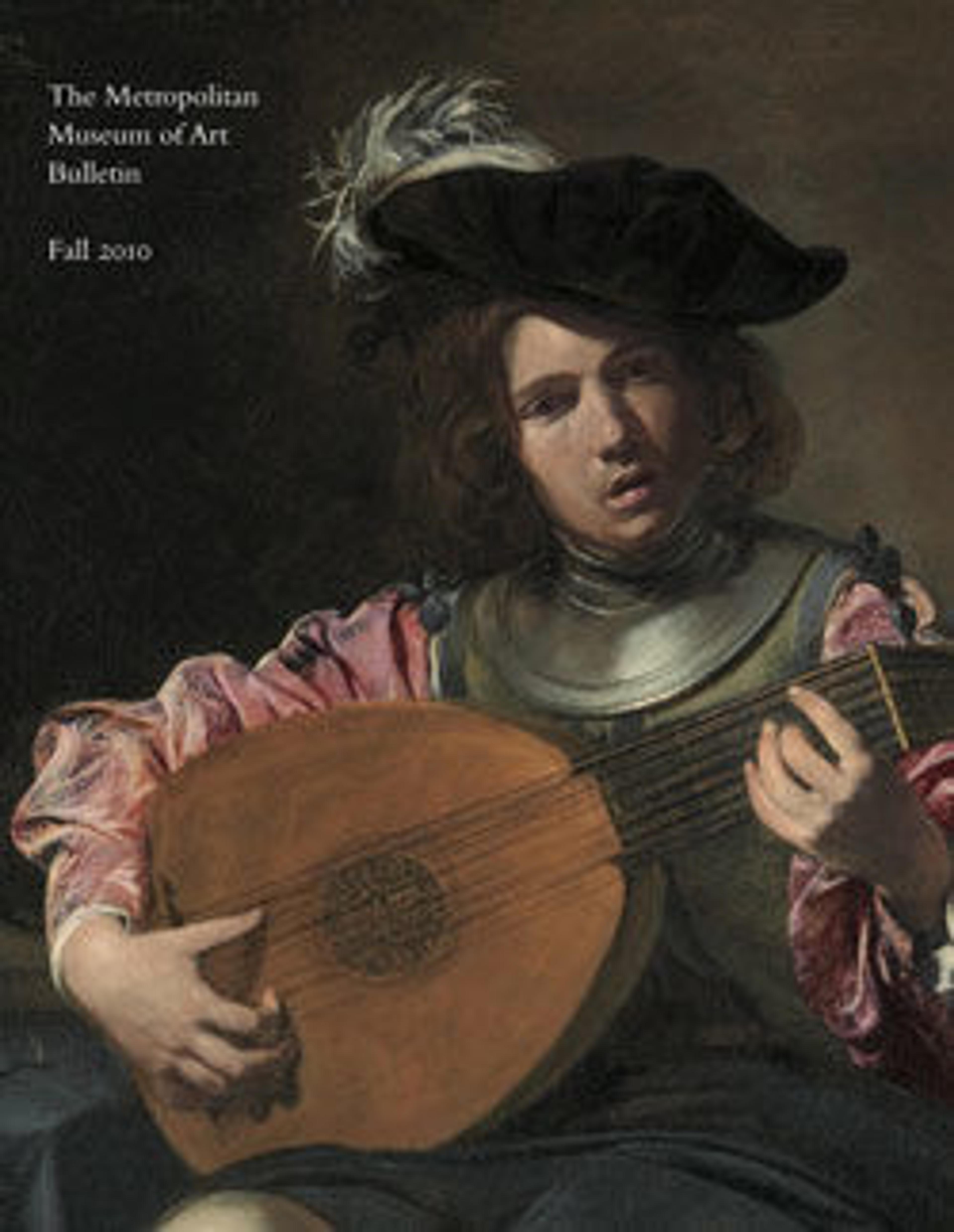Pen Box with Architectural Cartouches
During the 18th and 19th centuries, Iran witnessed a proliferation in the production of lacquer objects. Regarded as desirable possessions and status symbols, painted lacquerwares were commissioned by royal and elite patrons, sold commercially and exported abroad in quantity. Lacquer painters took great pride in their individual styles, which they demonstrated by signing and dating their works. This one has been created by an artist named `Ali Ashraf and dated A.H. 1156/A.D. 1743–44.
A master of the gul-u-bulbul (bird-and-flower) motif seen on lacquer objects from this period in Iran, `Ali Ashraf worked in a tight-knit circle that included Hajji Muhammad, who specialized in objects with Europeanizing landscapes, as well as his brother Muhammad Zaman, under whom he trained. The signature on the box reads "After Muhammad, ‘Ali Ashraf is noblest", is a punning reference to his teacher. The irises he combined with architectural views on the box’s decoration are likely a nod to Muhammad Zaman’s well-known series of iris studies.
A master of the gul-u-bulbul (bird-and-flower) motif seen on lacquer objects from this period in Iran, `Ali Ashraf worked in a tight-knit circle that included Hajji Muhammad, who specialized in objects with Europeanizing landscapes, as well as his brother Muhammad Zaman, under whom he trained. The signature on the box reads "After Muhammad, ‘Ali Ashraf is noblest", is a punning reference to his teacher. The irises he combined with architectural views on the box’s decoration are likely a nod to Muhammad Zaman’s well-known series of iris studies.
Artwork Details
- Title:Pen Box with Architectural Cartouches
- Artist:'Ali Ashraf (Iranian)
- Date:dated 1156 AH/1743–44 CE
- Geography:Attributed to Iran, Shiraz
- Medium:Papier-maché; painted, sprinkled with mica, and lacquered
- Dimensions:L. 9 1/2 in. (24.1 cm)
Depth. 1 1/4 in. (3.1 cm) - Classification:Lacquer
- Credit Line:Purchase, Patti Cadby Birch Gift, funds from various donors, and Paul Anavian and Massoud Nader Gift, 2008
- Object Number:2008.246a, b
- Curatorial Department: Islamic Art
More Artwork
Research Resources
The Met provides unparalleled resources for research and welcomes an international community of students and scholars. The Met's Open Access API is where creators and researchers can connect to the The Met collection. Open Access data and public domain images are available for unrestricted commercial and noncommercial use without permission or fee.
To request images under copyright and other restrictions, please use this Image Request form.
Feedback
We continue to research and examine historical and cultural context for objects in The Met collection. If you have comments or questions about this object record, please contact us using the form below. The Museum looks forward to receiving your comments.
